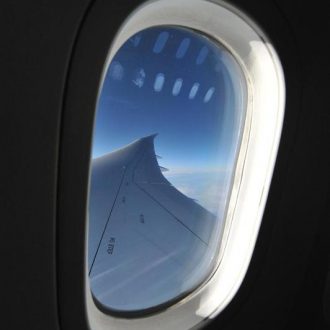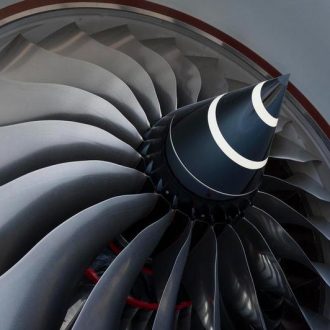
Room with a view: The windows on the 787 are up to 70 per cent larger and according to Boeing everyone on the Dreamliner has a window seat
Back in the early days airplanes were made from wood and canvas. Today most aircraft are made from aluminium. It’s a tried and tested material but has its limitations with its strength and weight.
So to allow aircraft to fly further and for longer, Boeing had to look at other materials to make the next big leap in aviation.
That’s why Boeing turned to carbon fibre, a material that has helped revolutionise aircraft manufacturing.
Why is carbon fibre special?
Aircraft designers want planes to be as light and efficient as possible. The lighter the aircraft, the less fuel it uses and the further it can fly.
But aircraft also need to be strong enough to withstand everything from hail storms to extreme winds. This balancing act has governed how aircraft are designed and how far they can fly for decades.
Carbon fibre changes the equation, because it is five times stronger than steel and half the weight. The design of the 787 uses carbon fibre to increase efficiency, reducing weight and also maintenance (as the carbon fibre does not corrode or rust). It all means the Qantas Dreamliner can fly routes like Perth to London. (The other part is more fuel efficient engines.)

Engineered for efficiency: Each blade is made from carbon fibre with a titanium edge and sensors within the engine send messages back to our engineering base so they can monitor performance.
Carbon fibre also makes other design features possible. With traditional materials, making an aircraft window any bigger than it already is would require a lot of extra reinforcement under the skin for structural integrity. And that adds weight. Because carbon fibre is much stronger, the Dreamliner windows can be made much bigger without the weight penalty.
The strength of the carbon fibre also allows for improvements to the cabin atmosphere, which means the air inside the aircraft can be kept more humid. That, in turn, creates a nicer atmosphere for passengers, with more moisture helping reduce that dried out feeling after a long flight.
Carbon fibre is also known as a composite material and the Dreamliner is built with 50 per cent composites. The lighter material means it’s more efficient than other aircraft of its size.
So how do you make a plane from carbon fibre?
Watch the video below of our first 787 being made and you’ll be able see the process of how carbon fibre is spun around the mould to create the fuselage of the 787. Also it’s a nice plug for our new plane.
Find out more about how the 787 came together in the special event First Flight: Secrets of the Dreamliner Sunday 19 November at 9:10pm on Channel 7.
For more Roo Tales click here.